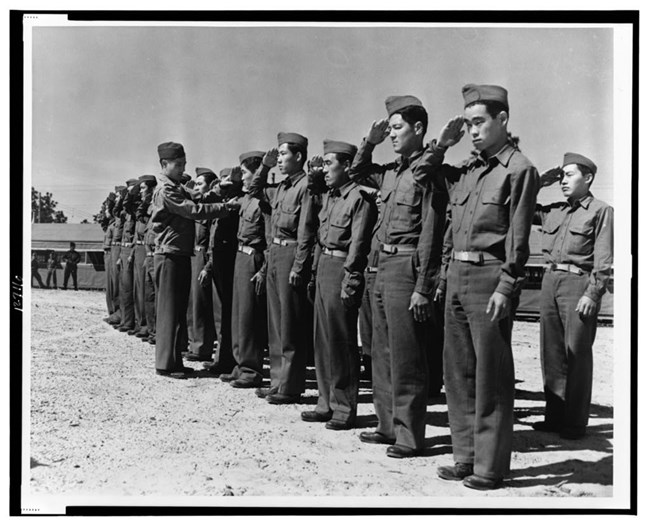Part of a series of articles titled Finding a Path Forward: Asian American Pacific Islander National Historic Landmarks Theme Study.
Article
Essay 10: Asian Americans and World War II

Photo in the collections of the Library of Congress (http://hdl.loc.gov/loc.pnp/cph.3c27110).
When assessing the history of Asian American communities, it is difficult to escape the conclusion that World War II was a major turning point. The last "good war" had as one of its enemies a hated Asian nation, Japan, and one result was the mass removal and incarceration of immigrants from Japan and their American-born and US citizen descendants. Other Asian nations were suddenly allies, and this led to a new image and new opportunities for immigrants from China, Korea, the Philippines, and India. But while there was initially a dramatic divide between the experiences of Japanese Americans and other Asian American groups, that divide began to close over the course of the war, and a number of overarching themes of the Asian American experience in World War II apply to Japanese Americans as well. Events stemming from the war led to a dramatically changed Asian American community, the effects of which are still being felt to this day.
But who were the Asian Americans on the eve of war?[1] According to the 1940 Census, they numbered 565,327, just four-tenths of 1 percent of the total population. However, they were concentrated in particular regions, particularly the territory of Hawai'i, where 55 percent of Asian Americans lived and where Asian Americans made up 73 percent of the population. In the continental US, most lived on the west coast, with just under two-thirds living in California alone.[2] Read more>> (.pdf 3.2MB)
[1] Though used here for convenience, it should be noted that the term "Asian American" was not used at that time, having been coined by historian Yuji Ichioka in the late 1960s.
[2] 1940 Census figures from Campbell Gibson and Kay Jung, Historical Census Statistics on Population Totals By Race, 1790 to 1990, and by Hispanic Origin, 1970 to 1990, For the United States, Regions, Divisions, and States, Working Paper No. 56 (Washington, DC: US Census Bureau, 2002), Tables C-7 and 26.
The views and conclusions contained in the essays are those of the authors and should not be interpreted as representing the opinions or policies of the U.S. Government. Mention of trade names or commercial products does not constitute their endorsement by the U.S. Government.
Last updated: July 23, 2024
